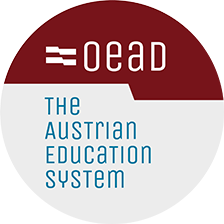International Standard Classification of Education (ISCED)
The structures of education systems vary between countries and can therefore be compared only with difficulty in many cases. ISCED is a statistical instrument and increases the international comparability of qualifications. ISCED helps educational researchers and educational policymakers compare, analyse and enhance the education systems in the OECD area (www.oecd.org) with currently 34 member states.
As ISCED levels have been specified from pre-primary education to university, they help experts and partners in other countries understand better and more quickly which educational level is achieved upon completion of a particular programme.
ISCED 2011 takes into account significant changes in educational systems worldwide since the last ISCED revision in 1997. The adapted ISCED 2011 system brings a far-reaching change for Austria regarding the presentation of Colleges for Higher Vocational Education. According to the newly available classification criteria, the 4th and 5th years of these schools now correspond to the ISCED Level 5; programmes at this level are also termed “short-cycle tertiary education”. This level covers all post-secondary qualifications that teach graduates professional knowledge, skills and competences typically in a practice-oriented way. One particular characteristic is that they are for specific occupations. Such programmes can also be defined as the first part of a Bachelor’s programme. Therefore competences acquired at colleges for higher vocational education are in direct comparison with academic programmes (such as a short-cycle degree in the UK), which will enhance permeability and mobility.
Level 0
Level 0 of the ISCED classification encompasses formal childcare from the age of three until entering primary education as well as early childhood education up to the age of three.
Level 1
Level 1 of the ISCED classification encompasses Primary School and begins at the age of compulsory education.
Level 2
Level 2 of the ISCED classification encompasses the first 4 years after primary education, namely: Compulsory Secondary School and Academic Secondary School Lower Cycle, .
Level 3
Level 3 of the ISCED classification encompasses educational institutions that focus on general or vocational education. In Austria, these include Academic Secondary School Upper Cycle, Colleges for Higher Vocational Education up to the 3rd grade (HTL, HAK, HLW), Schools for Intermediate Vocational Education, Pre-Vocational Schools and Education and Training for Healthcare Professions.
Level 4
Level 4 of the ISCED classification encompasses qualifications that are considered to be beyond secondary education, but are not included in the tertiary sector. These courses include Schools fo Nursing and certain Continuing Education Courses at Universities, Universities of Applied Sciences and University Colleges of Teacher Education.
Level 5
This level covers all post-secondary qualifications that teach graduates professional knowledge, skills and competences typically in a practice-oriented way, focusing on specific occupations. It includes Colleges for Higher Vocational Education from the 4thGrade, Schools for People in Employment, Add-on Courses, Post-secondary VET Courses and Master-Craftsperson, Foreperson and Construction Trades Courses.
Level 6
Level 6 of the ISCED classification is the first step into tertiary education. It includes bachelor degrees from universities, universities of applied sciences and university colleges of teacher education as well as comparable programmes
Level 7
Level 7 of the ISCED classification encompasses master degrees from universities, universities of applied sciences and university colleges of teacher education as well as comparable programmes.
Level 8
Level 8 of the ISCED classification encompasses the highest level of higher education, doctorates and postdoctoral qualifications (Dr, PhD).
Sources
ISCED 2011, Unesco Institute for Statistics
uis.unesco.org/sites/default/files/documents/isced-2011-operational-manual-guidelines-for-classifying-national-education-programmes-and-related-qualifications-2015-en_1.pdf
Further Information
uis.unesco.org/en/topic/international-standard-classification-education-isced
de.wikipedia.org/wiki/International_Standard_Classification_of_Education

































